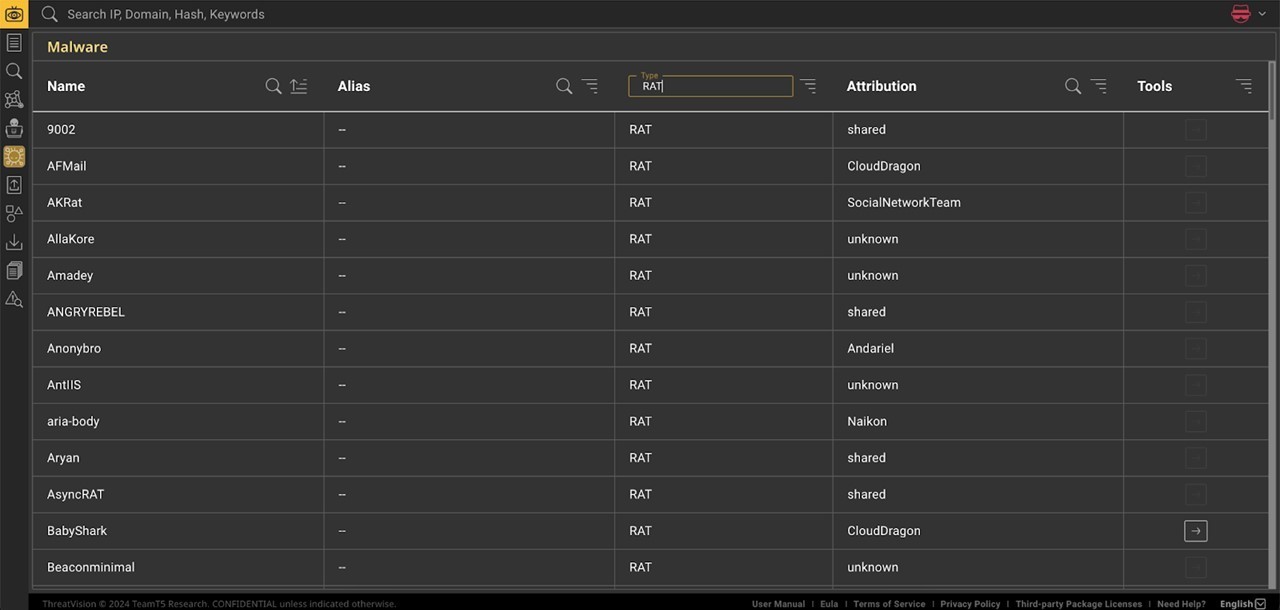Despite the evolution of cybersecurity tools, one persistent threat continues to challenge cybersecurity measures and exploit vulnerabilities: Remote Access Trojans (RATs). These malicious programs grant cybercriminals unauthorized access and control over targeted systems, posing significant risks to both individual users and organizations. Understanding RATs, their mechanisms, and their implications is crucial in fortifying cybersecurity defenses.
What is a RAT?
A Remote Access Trojan (RAT) is a type of malware designed to give an attacker complete control over a target computer. Once a RAT infects a system, it establishes a backdoor, allowing the attacker to perform a wide range of malicious activities, such as:
- Keylogging: Capturing and recording the keystrokes of the user to steal sensitive information like passwords and credit card details.
- Screen Capture: Taking screenshots or live video of the user’s activities.
- File Access: Uploading, downloading, or deleting files from the infected system.
- Remote Control: Executing commands and running programs on the victim’s computer.
- Monitoring: Using the system’s microphone or webcam to spy on the victim.
How Do RATs Spread?
RATs can spread through various methods, including:
- Phishing Emails: Cybercriminals often use deceptive emails to trick users into downloading and executing malicious attachments.
- Malicious Downloads: Infected software or files from untrustworthy websites can carry RATs.
- Exploiting Vulnerabilities: Attackers exploit security weaknesses in software or operating systems to deploy RATs without user interaction.
- Social Engineering: Manipulating users into performing actions that lead to RAT infection, such as clicking on malicious links or downloading compromised files.
The Threat Posed by RATs
The dangers of RATs are multifaceted and far-reaching. For individuals, RATs can lead to identity theft, financial loss, and privacy invasion. For organizations, the consequences can be even more severe, including data breaches, intellectual property theft, and significant financial damage. Moreover, RATs are often used as tools for advanced persistent threats (APTs), where cybercriminals maintain long-term access to a network, conducting prolonged and targeted attacks.
Detection and Prevention
Detecting and preventing RAT infections involves a combination of proactive and reactive cybersecurity measures:
- Regular Updates: Keeping operating systems and software up to date to patch security vulnerabilities.
- Antivirus and Anti-malware: Using robust security software to detect and remove threats.
- Firewalls: Implementing network firewalls to monitor and control incoming and outgoing traffic.
- User Education: Training users to recognize phishing attempts and avoid suspicious downloads.
- Intrusion Detection Systems (IDS): Deploying IDS to identify unusual activity that may indicate a RAT infection.
TeamT5’s Expertise and ThreatVision Platform
In the Asia-Pacific region, the need for localized cyber threat intelligence is paramount. TeamT5, with its decade-long dedication to researching Asia-Pacific cyber threats, offers unparalleled expertise in this domain. Our team’s proficiency in the Chinese language and deep understanding of regional APT hacker groups, particularly those from China, sets us apart.
Our ThreatVision platform is a comprehensive solution that goes beyond redistributing open-source intelligence. By conducting in-house research and analysis, ThreatVision provides up-to-date, accurate intelligence tailored to the unique challenges faced by organizations in the Asia-Pacific region.
Key Features of ThreatVision
- Rich Library: Includes Indicators of Compromise (IOCs) for swift threat identification, Threat Hunting Tools for direct detection, and Intelligence Reports for in-depth analysis of hacker behavior.
- Customized Services: The Request For Information (RFI) Service offers tailored reports and customized analysis.
- Integration Capabilities: The API Service facilitates automation and enhances threat response efficiency.
For detailed information about all known RATs and other cyber threats, explore the ThreatVision platform by TeamT5. Stay ahead of cybercriminals with our localized and specialized threat intelligence solutions.

Summary
Remote Access Trojans (RATs) represent a significant and ongoing threat in the cybersecurity landscape. By understanding their mechanisms, spread methods, and the damage they can cause, individuals and organizations can better prepare and protect themselves. TeamT5, with its extensive experience and specialized ThreatVision platform, is dedicated to providing the necessary intelligence to combat these threats effectively. Embrace proactive cybersecurity measures and leverage localized threat intelligence to secure your digital future.
Learn more about ThreatVision and enhance your cybersecurity strategy with TeamT5 today.Contact us to schedule a consultation.
(cover source:pexels)